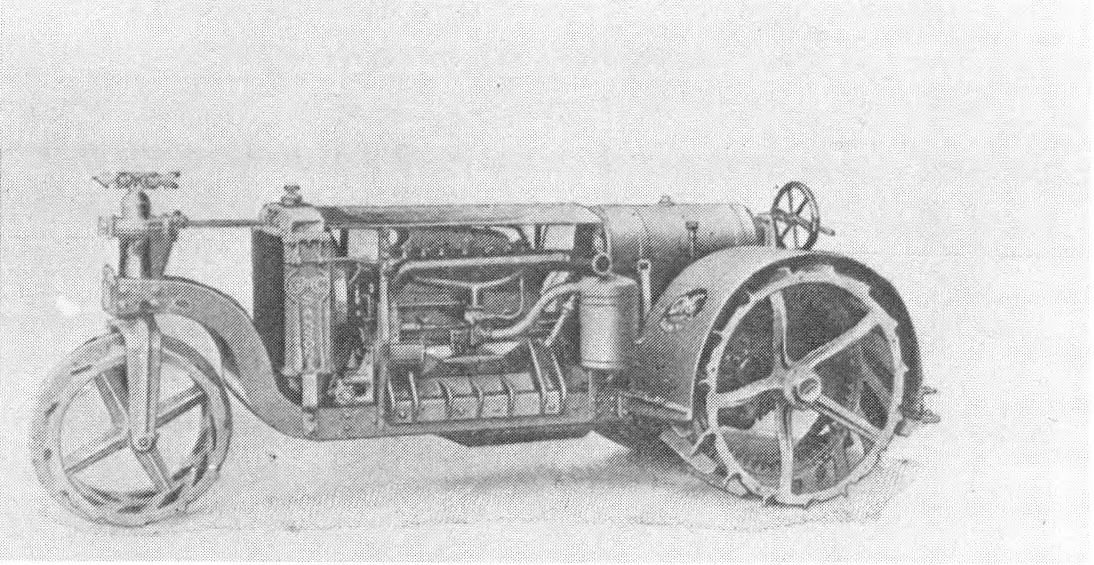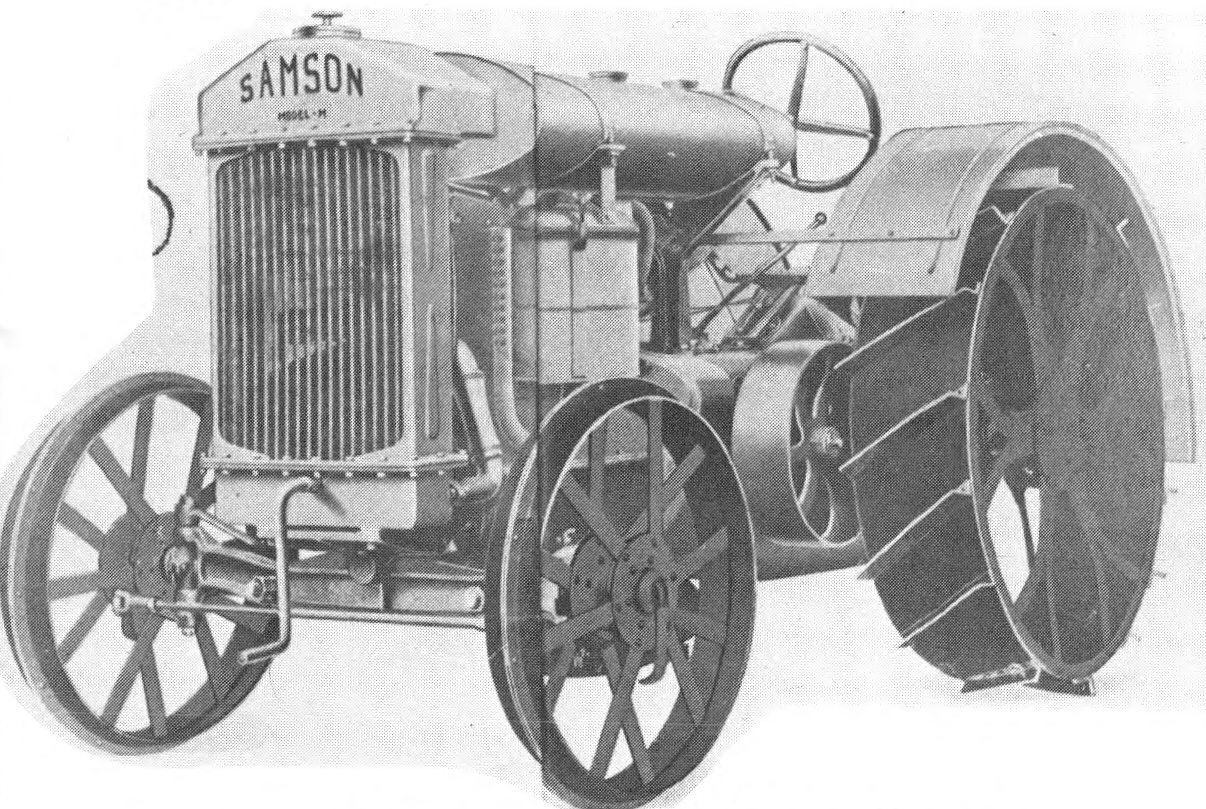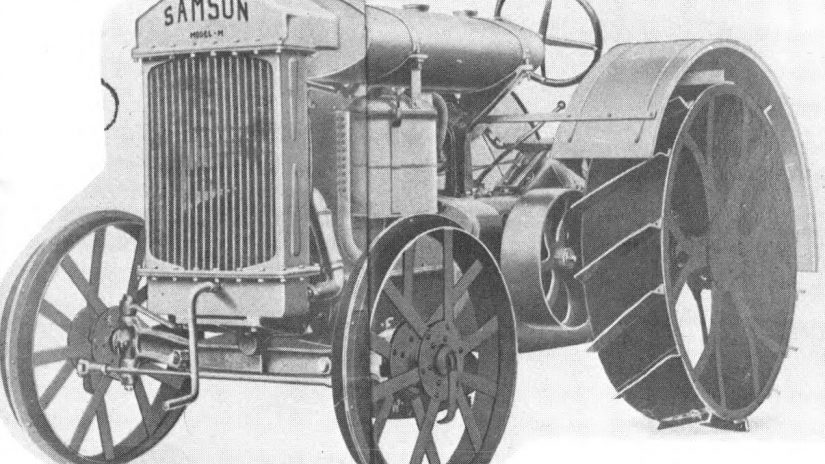William C. Durant, chairman and majority stockholder of General Motors Corporation was determined to meet the Fordson challenge by getting into the tractor business. If nothing else, it was a face saving move. It wasn’t bad enough that Ford had nearly cornered the automobile market — now in 1918, he introduced the Fordson tractor and was threaten ing to do the same thing in the farm tractor market.
The obvious response was to challenge Ford in the tractor business. In 1918, GMC purchased a plant at Janesville, Wisconsin, and in August of that year the tractor operation was separately incorporated as the Janesville Machine Company with an authorized capitalization of $2 million dollars. A second plant was erected in 1919 at a cost of $500,000.
Prior to purchasing the Janesville site, GMC bought out the Samson Tractor Works, Stockton, California. Samson had developed a “Sieve-Grip” tractor. It impressed the GM people, and after slight modifications, the GMC Samson tractor appeared. Its $1,750 list price was no competition to the Fordson, so in December, 1918, GMC announced “a tractor and a price”. The tractor was the Samson Model “M”, and the price was $650.
By January, 1919, GMC announced plans for a Samson Model “ A ” tractor, capable of pulling three plows. Probably due to a lack of capital, the Model A was never put into production.
The Samson Model D, Iron Horse was announced in January, 1919. GMC bought out rights to the “Jim Dandy” motor cultivator, and proceeded to build the Iron Horse in quantity. Motor cultivators were the rage of the day, and GMC obviously hoped to realize excellent profits. The combination of post-war depression and fierce competition, compounded with a poor tractor helped put GMC out of the tractor business. Mechanical problems abounded, and the design was such that the machine could be easily upset. Although some authorities have it that the rein-drive feature led to the downfall of the Iron Horse, it should be noted that the rein-drive system provided coordinated movement between hands and feet — a feature not found on most motor cultivators.
GMC experienced huge losses in its Samson venture. The small profits from the Model M were more than eaten up by the losses from the Iron Horse. By 1922, GMC got out of the tractor business and converted the Samson plant into a Chevrolet assembly operation.







